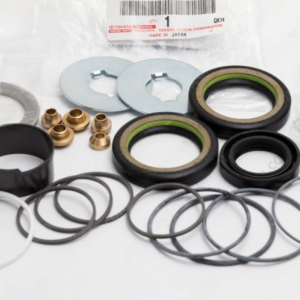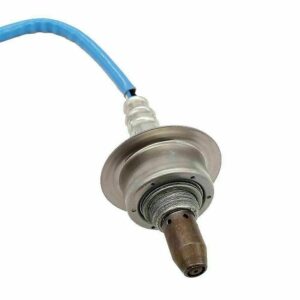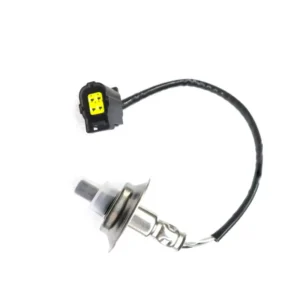**Unlocking Engine Health: The Vital Role of Coolant Temperature Sensors**
In the intricate dance of engine performance and reliability, there’s a silent sentinel that stands guard, ensuring optimal operating conditions—the coolant temperature sensor. Often overlooked amidst the roar of pistons and the hum of belts, this unassuming component plays a pivotal role in regulating engine temperature and safeguarding against overheating. Join us as we delve into the depths of coolant temperature sensors and uncover their significance in the realm of automotive engineering.
**Understanding the Essence: What is a Coolant Temperature Sensor?**
A coolant temperature sensor, also known as an engine temperature sensor or coolant sensor, is a small yet critical component located within the engine’s cooling system. Its primary function is to monitor the temperature of the engine coolant and provide this data to the engine control unit (ECU) or powertrain control module (PCM). Based on the coolant temperature readings, the ECU can adjust fuel injection timing, ignition timing, and other engine parameters to maintain optimal operating conditions.
**The Significance of Temperature Regulation**
In the high-stakes environment of an internal combustion engine, where extreme temperatures can wreak havoc on delicate components, maintaining proper temperature regulation is crucial for engine performance and longevity. Coolant temperature sensors play a pivotal role in this regard, providing real-time feedback to the ECU to ensure that the engine operates within its optimal temperature range.
**The Silent Observer: How Does a Coolant Temperature Sensor Work?**
Despite its modest size and unassuming appearance, the coolant temperature sensor employs sophisticated technology to fulfill its role effectively. Typically located near the engine block or cylinder head, the sensor is in direct contact with the engine coolant. As the coolant temperature changes, the sensor’s electrical resistance varies accordingly.
The ECU interprets these resistance changes as temperature readings and adjusts engine parameters accordingly. For example, during cold starts, the ECU may enrich the air-fuel mixture to facilitate combustion, while during normal operating conditions, it may adjust ignition timing and fuel injection to optimize fuel efficiency and reduce emissions.
**The Unseen Benefits: Advantages of Coolant Temperature Sensors**
While coolant temperature sensors may operate quietly behind the scenes, their impact on engine performance and reliability is undeniable. Here are some key advantages of coolant temperature sensors:
1. **Prevent Overheating:** By monitoring coolant temperature in real-time, coolant temperature sensors help prevent engine overheating, which can lead to serious damage and costly repairs.
2. **Optimize Performance:** Proper temperature regulation ensures that the engine operates within its optimal temperature range, maximizing performance, fuel efficiency, and emissions control.
3. **Extend Engine Lifespan:** By preventing overheating and minimizing thermal stress on engine components, coolant temperature sensors contribute to extending the lifespan of the engine.
4. **Enhance Diagnostic Capabilities:** Coolant temperature sensors play a crucial role in onboard diagnostics, allowing the ECU to detect and diagnose cooling system faults and issues related to engine temperature.
**Looking Ahead: The Future of Engine Cooling Technology**
As automotive technology continues to advance, so too will the field of engine cooling technology. Innovations in sensor design, integration with vehicle systems, and connectivity to advanced driver assistance systems (ADAS) may lead to even more responsive and intelligent engine cooling solutions in the future.
Furthermore, as the automotive industry transitions towards electrification and autonomous driving, coolant temperature sensors will play a crucial role in optimizing the thermal management of electric drivetrains and ensuring safe and efficient operation in next-generation vehicles.
**In Conclusion: Ensuring Engine Health and Performance**
In the dynamic world of automotive engineering, where precision and reliability are paramount, coolant temperature sensors emerge as silent but indispensable guardians of engine health. Their unassuming presence belies their critical importance in regulating engine temperature, preventing overheating, and ensuring optimal performance and longevity. So, the next time you hit the road and feel the engine hum with vitality, remember to thank the unsung hero working diligently behind the scenes—the coolant temperature sensor.
In stock (can be backordered)
$12,851.68
**Unlocking Engine Health: The Vital Role of Coolant Temperature Sensors**
In the intricate dance of engine performance and reliability, there’s a silent sentinel that stands guard, ensuring optimal operating conditions—the coolant temperature sensor. Often overlooked amidst the roar of pistons and the hum of belts, this unassuming component plays a pivotal role in regulating engine temperature and safeguarding against overheating. Join us as we delve into the depths of coolant temperature sensors and uncover their significance in the realm of automotive engineering.
**Understanding the Essence: What is a Coolant Temperature Sensor?**
A coolant temperature sensor, also known as an engine temperature sensor or coolant sensor, is a small yet critical component located within the engine’s cooling system. Its primary function is to monitor the temperature of the engine coolant and provide this data to the engine control unit (ECU) or powertrain control module (PCM). Based on the coolant temperature readings, the ECU can adjust fuel injection timing, ignition timing, and other engine parameters to maintain optimal operating conditions.
**The Significance of Temperature Regulation**
In the high-stakes environment of an internal combustion engine, where extreme temperatures can wreak havoc on delicate components, maintaining proper temperature regulation is crucial for engine performance and longevity. Coolant temperature sensors play a pivotal role in this regard, providing real-time feedback to the ECU to ensure that the engine operates within its optimal temperature range.
**The Silent Observer: How Does a Coolant Temperature Sensor Work?**
Despite its modest size and unassuming appearance, the coolant temperature sensor employs sophisticated technology to fulfill its role effectively. Typically located near the engine block or cylinder head, the sensor is in direct contact with the engine coolant. As the coolant temperature changes, the sensor’s electrical resistance varies accordingly.
The ECU interprets these resistance changes as temperature readings and adjusts engine parameters accordingly. For example, during cold starts, the ECU may enrich the air-fuel mixture to facilitate combustion, while during normal operating conditions, it may adjust ignition timing and fuel injection to optimize fuel efficiency and reduce emissions.
**The Unseen Benefits: Advantages of Coolant Temperature Sensors**
While coolant temperature sensors may operate quietly behind the scenes, their impact on engine performance and reliability is undeniable. Here are some key advantages of coolant temperature sensors:
1. **Prevent Overheating:** By monitoring coolant temperature in real-time, coolant temperature sensors help prevent engine overheating, which can lead to serious damage and costly repairs.
2. **Optimize Performance:** Proper temperature regulation ensures that the engine operates within its optimal temperature range, maximizing performance, fuel efficiency, and emissions control.
3. **Extend Engine Lifespan:** By preventing overheating and minimizing thermal stress on engine components, coolant temperature sensors contribute to extending the lifespan of the engine.
4. **Enhance Diagnostic Capabilities:** Coolant temperature sensors play a crucial role in onboard diagnostics, allowing the ECU to detect and diagnose cooling system faults and issues related to engine temperature.
**Looking Ahead: The Future of Engine Cooling Technology**
As automotive technology continues to advance, so too will the field of engine cooling technology. Innovations in sensor design, integration with vehicle systems, and connectivity to advanced driver assistance systems (ADAS) may lead to even more responsive and intelligent engine cooling solutions in the future.
Furthermore, as the automotive industry transitions towards electrification and autonomous driving, coolant temperature sensors will play a crucial role in optimizing the thermal management of electric drivetrains and ensuring safe and efficient operation in next-generation vehicles.
**In Conclusion: Ensuring Engine Health and Performance**
In the dynamic world of automotive engineering, where precision and reliability are paramount, coolant temperature sensors emerge as silent but indispensable guardians of engine health. Their unassuming presence belies their critical importance in regulating engine temperature, preventing overheating, and ensuring optimal performance and longevity. So, the next time you hit the road and feel the engine hum with vitality, remember to thank the unsung hero working diligently behind the scenes—the coolant temperature sensor.
| Weight | 0.26 kg |
|---|---|
| Warehouse | Inventory at warehouse 2 |




Get E-mail updates about our latest products and special offers.
Sensors and More is Jamaica’s ultimate online auto parts store. Established in 2020, we specialize in genuine electrical parts for Japanese, Read more…
Reviews
There are no reviews yet.